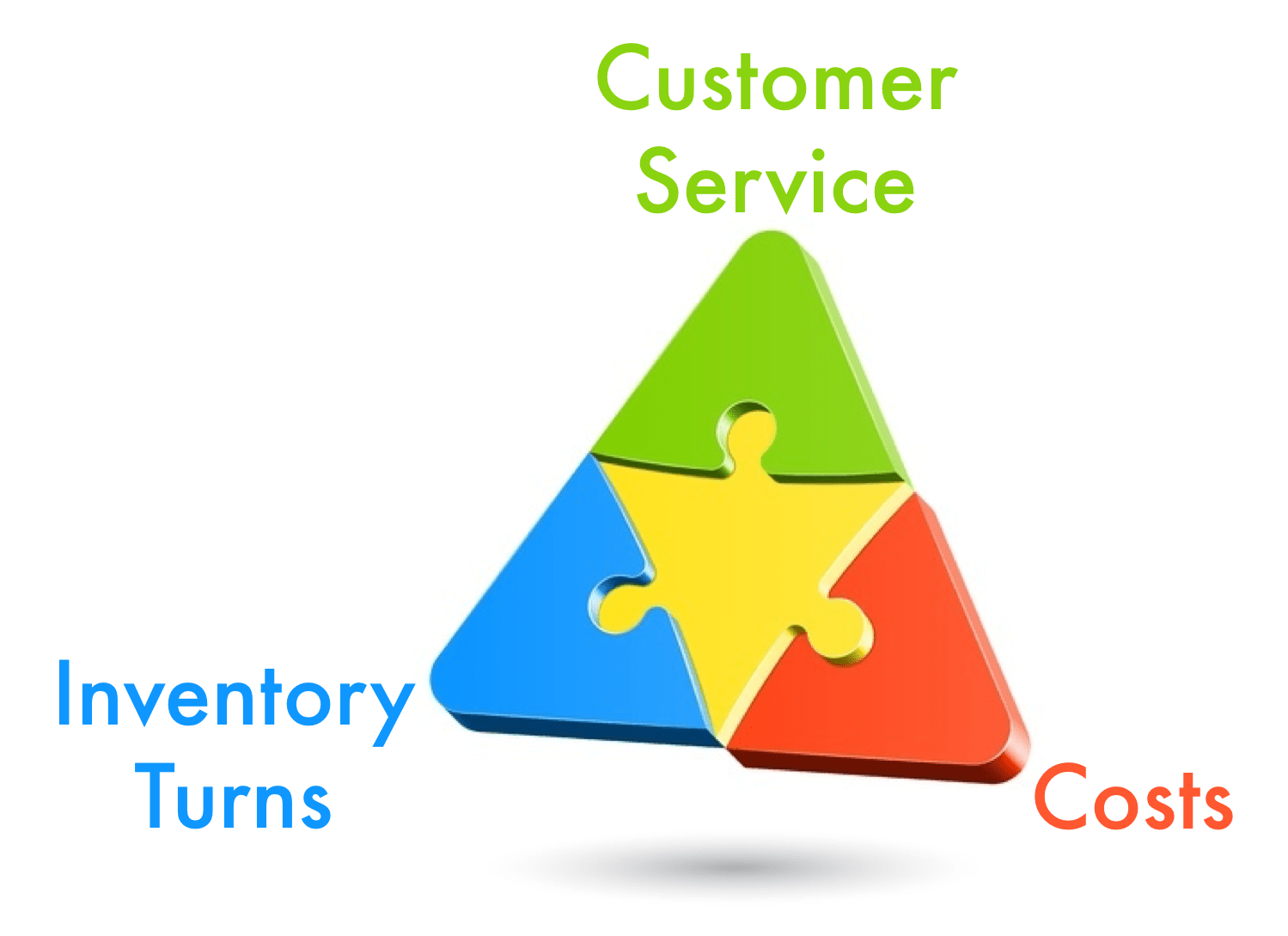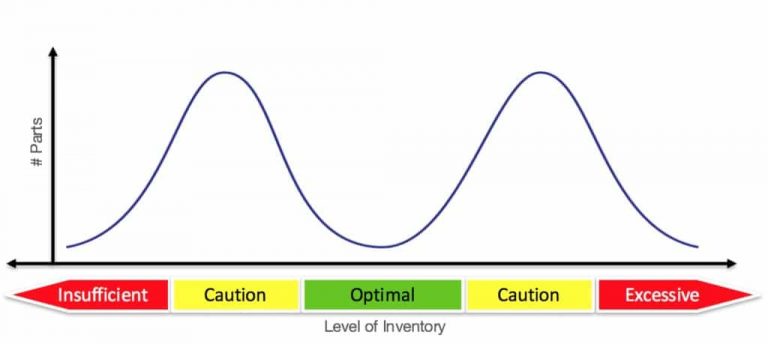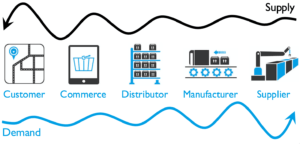What is Demand Driven MRP? It is the next generation of inventory planning and execution solutions; a Multi-Echelon Material and Inventory Planning and Execution system that enables a company to become demand driven. Demand Driven MRP (DDMRP) was developed by Carol Ptak and Chad Smith the founders of the Demand Driven Institute as a tool that will promote and protect flow through the entire supply network. The Demand Driven Institute is an organization that is devoted to the proliferation and development of demand driven strategies in industry. Carol and Chad are also the co-authors of the 3rd Edition of Orlicky’s Material Requirements Planning.
MRP as we know it was developed by Joe Orlicky back in the late ’60s and ’70s. In its day, MRP was an excellent tool and in fact, it remains to be a true J.I.T. inventory management solution. However, a lot has changed in our business environments since the inception of MRP and these factors are driving up operational costs through inappropriate levels of inventory:
• Customer loyalty has been significantly eroded
• Customers want products quicker
• Product complexity has increased
• Forecast accuracy is 75% at best at the Planning Family level and is declining fast
• Product life cycles are reducing
• Product variety is increasing
• Supply networks are reaching out across the entire world generating every increasing lead times
The parameters of this “new normal” mean that any change or delay is simply amplified through the routing of the product structure, extending into the supply network. This is called MRP Nervousness and the Bull Whip Effect, and are the result of demand distortion and supply disruption through the entire network.
As supply networks become ever more complex with increasingly longer lead times, variability in demand and supply have significant influence on the performance of the organization:
• Poor Inventory Performance
– Insufficient inventory where there are specific demand requirements and excess inventory where there is no demand requirement; resulting in low inventory turns and high levels of part obsolescence
• Low Service Levels
– Inability to meet swings in demand resulting in short or missed customer orders
– Poor on-time delivery performance
– Market share erosion
• High Expedite and Related Costs to Improve Service Levels and Availability of Inventory
– Increased freight costs
– Unnecessary shipments for materials that are not actually required
– Production overtime costs
• Constant schedule changes, extending lead times further and adding waste
Further stress is then placed on operations and supply chain teams as they face organizational pressure to reduce costs, increase inventory turns, whilst improving customer service levels. This is the impasse that most manufacturing companies are faced with. As they attempt to meet operational performance objectives, organizations find that they have too many parts where there is insufficient inventory and too many parts where there is excess inventory. MRP has created a Bi-Modal inventory distribution. The legacy planning techniques and tools that MRP provides simply don’t make the grade in the 21st Century…


DDMRP is a methodology that enables companies to regain control and become truly demand driven. It decouples the supply network at strategic positions by establishing dynamically managed inventory providing independence between supply and demand. The result is the dampening of the inherent variability we see every day in demand and supply providing more stable signals between producing companies and overall greater availability of inventory across the supply network. In addition, decoupled strategically positioned inventory facilitates a significant reduction in lead times across the entire supply network.

Creating independence through decoupling provides further benefits within our planning environments. The decoupling of the supply network, internal and external to the business, splits the scheduling horizon enabling the planning of shorter independent planning horizons reducing complexity normally associated with scheduling in a traditional manufacturing environment. This, in turn, contributes to minimizing the overall nervousness within the system.

After defining the decoupled strategic inventory location, the next step in establishing DDMRP is to define the Buffer Profiles and Zones. Buffer Profiles relate to the levels of variability in demand and supply, and the variations in lead time and these are assigned to all parts based on groups with similar traits. Buffer Profiles are then utilized along with Average Daily Usage (ADU) to define three specific Zones for each part within the system; Yellow (total usage over the product lead time), Green (replenishment order quantity) and Red (level of safety to cover variability).
Dynamic Adjustments, the third step in defining a DDMRP system is performed on a daily basis. DDMRP senses changes in demand patterns and variability within the network to then resize the overall definition of each Zone. The process of sensing changes and shaping the Strategic Inventory ensures optimum levels of inventory are positioned across the supply network. The generation of supply replenishment is initiated during the Demand Driven Planning phase when inventory levels between the producing and supply nodes of the supply network drop below dynamically defined thresholds.
Through dynamically controlling inventory levels and supply order generation, DDMRP reduces inventory across the supply network without any service erosion. In fact, it actually increases service levels unlike the result of the majority of organizational programs that set out to reduce inventory.
It is important to understand that DDMRP is not an inventory reduction program, it is a Multi-Echelon Material and Inventory Planning and Execution system that dampens the variability in demand distortion and supply disruption, providing a consistent availability of inventory, maintaining stable signals to suppliers, optimizing inventory to be in the right place at the right quantity at the right time.

DDMRP is a proven solution that will:
• Achievement of customer service levels of 99%
• Average on-hand inventories reduced by as much as 70%
• Part obsolescence reduced by up to 90%
• Inventory turns increased by as much as 200-400%
• Replenishment lead times reduced by as much as 90%
• Achievement of up to 100% On-Time Delivery
• Increase availability of buyers, planners, and schedulers by up to 25%
DDMRP does not replace your ERP system; it augments it by providing a 21st Century solution for demand driven inventory planning and execution. High Impact Coaching & Strategies’ DDMRP application is fully Compliant, as certified by the Demand Driven Institute, and can be integrated with ERP systems or utilized as a standalone application. On a daily basis, we pull transactional information from the ERP system which is then analyzed and processed during the first three steps of the DDMRP model. Our application then provides planners and buyers with replenishment recommendations as well as identifying key issues with current on-hand inventories within the Demand Driven Planning and Execution suite. After approvals from the planners and buyers, we push the requirements back to the ERP system to auto-generate Work Orders and Purchase Orders.
High Impact’s DDMRP application provides a simple and intuitive demand driven planning and execution system offering more time for optimizing strategic inventory positions and improving the overall supply network instead of the daily routine of fire-fighting as a consequence of MRP.
References:
Demand Driven Institute (2012) The State of Demand Driven MRP
Ptak, C. & Smith, C. (2011) Standing on the Shoulders of a Giant to See the Future of Formal Planning
Newsletter Sign-Up
Keep up-to-date on what's happening in our Demand Driven World. Get information manufacturing and supply chain topics as well as news on client achievements, up and coming training events and other interesting stuff!





